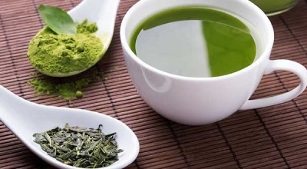Japanese diet can be compared to a difficult exam that requires you to show samurai willpower in losing weight. Once you pass, not only will you lose weight, but you will also be healthier. After reading the material, you will discover many new things about "Japanese".
Japanese weight loss diet

Once you find the extra pounds in you, immediately rush to choose the right weight loss scheme. The Japanese salt-free diet is an effective way to lose weight.
The Japanese diet is named after Japanese nutritionists. It is adapted for Europeans and bears no resemblance to national Japanese cuisine. However, it allows you to develop proper eating habits typical of the people of Japan.
The Japanese are known for their slender physique and longevity, largely thanks to the diet they follow.
Advantages and disadvantages of the Japanese diet
Let's examine in more detail the advantages and disadvantages of such a diet. The Japanese 13-day diet has several benefits:
- It is an effective weight loss option. According to this scheme, you can reduce your body weight by 8 or more pounds.
- Reducing salt intake has a positive effect: excess fluid leaves the body and swelling is reduced. The cardiovascular system will gradually return to normal.
- There is a noticeable improvement in well-being. Reducing the amount of salty foods in the diet will help a person get rid of these bad habits.
- Plant proteins allow you to maintain leanness, strengthen the immune system over a long period of time.
- The Japanese food menu is a selection of affordable products that can be purchased at any supermarket.
- Such a weight loss course is relevant at any time of the year.
This weight loss system is harmful for several reasons:
- Daily coffee intake can cause problems with the cardiovascular system, central nervous system and gastrointestinal tract (CNS and GI tract).
- The diet is not balanced, it is very close to a hunger strike.
- Long breaks before meals can be a starting point for serious stomach ailments.
- Many people find it difficult to get used to the diet.
The Japanese diet is one of the most famous methods of fast weight loss.
Basic rules of the Japanese diet
A series of weight loss rules such a diet to help improve your figure and physical fitness:

- eat food exclusively from a special menu;
- consider fasting days in advance;
- does not edit or change the order of items;
- give up sweet, salty, starchy foods (except those allowed);
- try to drink a daily amount of clean water (1, 5 - 2 liters, depending on your weight);
- Drink green tea after any meal, as black tea is forbidden;
- cook vegetables in a slow cooker or fry in olive oil in the oven;
- is allowed to repeat a similar diet once every six months;
- it is necessary to take multivitamins, active supplements that will compensate for the lack of nutrients in the body;
- you need to consult an expert, because the food system has side effects;
- psychological preparation is the key to every child's success. Japanese is no exception;
- before you start, gradually eliminate banned, especially harmful products from your menu;
- original serving of vegetables and fruits will help cope with the desire to eat some kind of "harmful", and will also increase the mood of those who lose weight.
It is necessary to strictly adhere to the menu, not changing the order of the day or the set of products, strictly following the rules of cooking.
Preparing for the Japanese diet
We strongly recommend that you do not skip this step, as a sudden change in diet is stressful for everyone, even if you decide to try the gentler Hayley Pomeroy diet.
Here are some tips to help you rebuild your body in a new way and start losing weight:
- exclude from the diet all kinds of "harmful" (fried, sweet, flour, sauces, semi-finished products, instant food) a week before the start of the diet;
- take a smaller plate - this will reduce the amount eaten by 20-25%;
- do not eat at night, eat dinner 3 hours before bedtime;
- drink the norm of pure water (1, 5-2 liters per day);
- In the morning, drink your first glass of water in small sips to activate your metabolism after sleep.
7-day Japanese diet menu
The seven-day Japanese salt-free diet consists of three meals a day: breakfast, lunch and dinner. All drinks are consumed without sugar.
Example of a balanced diet for each day:

- Start your breakfast with a cup of coffee or green tea. For lunch, boil 2 eggs, chop Peking cabbage salad, carrots, season with vegetable oil. Then drink 1 glass of freshly prepared tomato juice. Dinner consists of boiled fish (150-200 g), 100 grams of Chinese cabbage with the addition of one tablespoon of olive oil.
- Start your first meal with a little rye toast and coffee / tea. Lunch consists of a vegetable-based salad, roasted fish (200 grams). For dinner, cook a small piece of beef (200 grams) + a glass of kefir with a little fat.
- Natural unpackaged coffee - breakfast. For lunch, boil 1 hard-boiled egg, slice a carrot salad (a small portion weighing 150 grams), season with vegetable oil. At the end of the day, snack on an apple.
- For breakfast, in addition to a cup of coffee, 1 toast of rye bread is allowed. The second meal includes an egg, 3 medium carrots, 10 grams of natural low-fat cheese. In the evening, eat fruits that are allowed on the menu.
- For breakfast, grate the carrot and season it with a lemon wedge. Bake fish fillets for lunch. Squeeze a glass of juice from the tomato. Dinner includes 2-3 unsweetened fruits (eg pear).
- Drink a mug of weak green tea early in the day. At lunch time, cook 300 grams of chicken breast, chop carrot and cabbage salad (150 grams). For dinner - 2 boiled eggs, grated carrot salad with a drop of oil.
- Rye croutons and a cup of tea are allowed for breakfast. Lunch consists of a small piece of boiled beef (200 grams) + apples. Dinner - any of the proposed (without beef).
The 7-day Japanese diet and the menu described above do not guarantee significant weight loss. During this period, you can only remove excess water from the body.
This diet can be called without salt precisely because of the fact that you drink a lot and do not eat salty foods, the pounds are literally washed away.
Japanese diet menu for 9 days
The diet meal below is no different from the seven-day option, but adds two more days:
- Drink coffee / green tea without sugar for breakfast. Second meal - 500 gr. boiled chicken, a bowl of cabbage and a carrot salad. Dinner will consist of grated carrots seasoned with sesame oil.
- Start your day with regular drinks. The snack consists of boiled chicken fillet (150 g), carrots and Peking salad, 2 eggs. Eat 2 permitted fruits in the evening.
13-day menu of Japanese food by days
Added a few more days to the Japanese diet menu:

- In the morning, cheer yourself up with a cup of coffee. Lunch diet includes: a slice of cheese (10 grams), 1 boiled egg, a salad of grated carrot strips, cabbage. A snack of "real" fruit for dinner.
- Early in the day - rye toast with green tea. For lunch, fry the zucchini in olive oil. Dinner can consist of two hard-boiled eggs, cabbage salad seasoned with lemon wedge and butter, boiled veal (150-200 grams).
- Eat coffee and croutons for breakfast. The second meal is 200 grams of fish (cooked or made in a slow stove), mixed salad. Cook a slice of beef for dinner. Go to the supermarket for fresh kefir.
- After waking up - a cup of coffee. The daily diet consists of a couple of hard-boiled eggs, 150 gr. cabbage salad. For dinner, fry or cook 200-300 grams of fish fillet.
- From the next day, you must select a menu of any day and add 1 banned product. It is important to gradually abandon the two-week diet and not uncontrollably absorb previously forbidden foods.
Fish, chicken, beef, eggs, cheese and kefir should be the basis of your menu.
If you have a sweet tooth, you can sniff vanilla during dieting. It will reduce the need to get free and eat a sweet bun.
- for breakfast, cook porridge in water (buckwheat, oatmeal);
- for lunch you can eat cooked rice with meat;
- Introduce protein and vegetable snacks into your diet; gradually add salt and pepper to your meals; The withdrawal period from such a diet lasts about 4 weeks, so you have to be patient.
List of Japanese diet foods
As part of this type of diet, it is necessary to eat natural products that are low in fat and carbohydrates:

- natural beans or ground coffee (accelerates metabolic processes in the body, normalizes blood pressure);
- white fish (pechenitsa only) because red fish is too greasy;
- green tea (natural without fruit additives);
- fresh fruit (except bananas and grapes that contain a lot of sugar). Give preference to green apples with "acidity", pears, grapefruit, cherries. You can drink cocktails or smoothies;
- lean meat (beef, veal);
- tomato juice that you made yourself in a blender. Stores sell drinks that are high in salt;
- fresh kefir with little fat (or no fat at all);
- chicken or quail eggs;
- chicken (pechenitsa), turkey;
- vegetable oil (olive or sesame); non-carbonated mineral water;
- vegetables (preferably Chinese cabbage, eggplant, zucchini, carrots);
- rye bread or croutons.
Forget salt, sugar, spices (make you eat more than you need to satisfy your hunger), leave smoked meats, bakery products, bananas and grapes in the store.
List of forbidden Japanese diets
Diet foods contain a list of foods that should not be consumed.
To lose weight, you must leave the following positions:
- Adding spices and herbs is not recommended. Salting dishes is strictly forbidden.
- Don't drink alcohol while losing weight. They themselves are a very caloric product.
- Eliminate flour, sweet and fatty foods from your diet.
- As mentioned above, avoid two types of fruits (bananas and grapes) that contain a lot of sugar.
Results

In such a short period of time (13 days) you can go as much as 15 kilograms (depending on the duration of the course and the initial weight). Of course, if you follow all the instructions, do not replace the products, strictly follow the established daily routine.
Keep in mind that in a balanced Japanese diet for 13 days, the menu helps to improve metabolism, so that weight loss will continue even after it is over. Drinking plenty of water will improve the appearance of the skin and remove swelling.
It is strictly forbidden to take snacks during the diet and any deviations from the proposed menu, otherwise the result will be far from promised.
Contraindications
The Japanese diet is a difficult option to improve the parameters of the figure, so it is not suitable for everyone. It should be noted again that you need to consult a dietitian before you start dieting.
The following is a list of prohibition factors for "Japanese women":
- is contraindicated in pregnancy and lactation;
- adolescents (under 18), older people should not restrict their diet;
- general weakening of the immune system, colds, SARS, influenza;
- are unacceptable for people with chronic diseases (cardiovascular, intestinal, kidney diseases);
- stool violation, nausea;
- postoperative period (regardless of the severity of the operation);
- mental, physical, emotional stress (for example, upcoming competitions, contests, reporting);
- If you feel weak, dizzy for a few days after starting your diet, then you should refuse it.
We analyzed the peculiarities of the Japanese diet for a week or longer. Fresh vegetables, fruits, mostly fish, moderate oil consumption, fermented dairy products, salt rejection are the main such food system. It can be assumed that this is the key to the longevity and harmony of the Japanese.




























